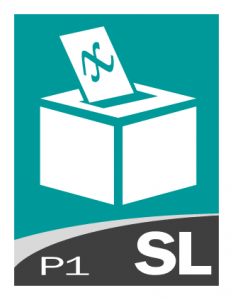 The State Legitimacy Indicator considers the representativeness and openness of government and its relationship with its citizenry. The Indicator looks at the population’s level of confidence in state institutions and processes, and assesses the effects where that confidence is absent, manifested through mass public demonstrations, sustained civil disobedience, or the rise of armed insurgencies. Though the State Legitimacy indicator does not necessarily make a judgment on democratic governance, it does consider the integrity of elections where they take place (such as flawed or boycotted elections), the nature of political transitions, and where there is an absence of democratic elections, the degree to which the government is representative of the population of which it governs. The Indicator takes into account openness of government, specifically the openness of ruling elites to transparency, accountability and political representation, or conversely the levels of corruption, profiteering, and marginalizing, persecuting, or otherwise excluding opposition groups. The Indicator also considers the ability of a state to exercise basic functions that infer a population’s confidence in its government and institutions, such as through the ability to collect taxes.
The State Legitimacy Indicator considers the representativeness and openness of government and its relationship with its citizenry. The Indicator looks at the population’s level of confidence in state institutions and processes, and assesses the effects where that confidence is absent, manifested through mass public demonstrations, sustained civil disobedience, or the rise of armed insurgencies. Though the State Legitimacy indicator does not necessarily make a judgment on democratic governance, it does consider the integrity of elections where they take place (such as flawed or boycotted elections), the nature of political transitions, and where there is an absence of democratic elections, the degree to which the government is representative of the population of which it governs. The Indicator takes into account openness of government, specifically the openness of ruling elites to transparency, accountability and political representation, or conversely the levels of corruption, profiteering, and marginalizing, persecuting, or otherwise excluding opposition groups. The Indicator also considers the ability of a state to exercise basic functions that infer a population’s confidence in its government and institutions, such as through the ability to collect taxes.
Questions to consider may include*:
Confidence in the Political Process
- Confidence in Government: Does the government have the confidence of the people?
Political Opposition
- Peaceful Demonstrations: Have peaceful demonstrations occurred
- Riots & Uprisings: Have riots occurred?
Transparency
- Corruption of Federal Officials: Is there evidence of corruption on the part of federal officials?
- Accusation of Corruption of Officials: Are federal and/or local officials considered to be corrupt?
Openness and Fairness of the Political Process
- Political Rights: Do political rights for all parties exist?
- Makeup of Government: Is the government representative of the population?
- Leadership Transition: Have there been recent peaceful transitions of power?
- History of Leadership Transitions: What is the longer term history of transition of power?
- Perception of Elections: Are elections perceived to be free and fair?
- Monitoring of Elections: Have elections been monitored and reported as free and fair?
Political Violence
- Political Assassinations: Are there reports of politically motivated attacks and assassinations?
- Armed Insurgents: Are there reports of armed insurgents and attacks?
- Terrorism: Have there been terrorist attacks such as suicide bombings and how likely are they?
* Indicator descriptions are not exhaustive, and are intended only as an entry point for further interpretive analysis by the user.